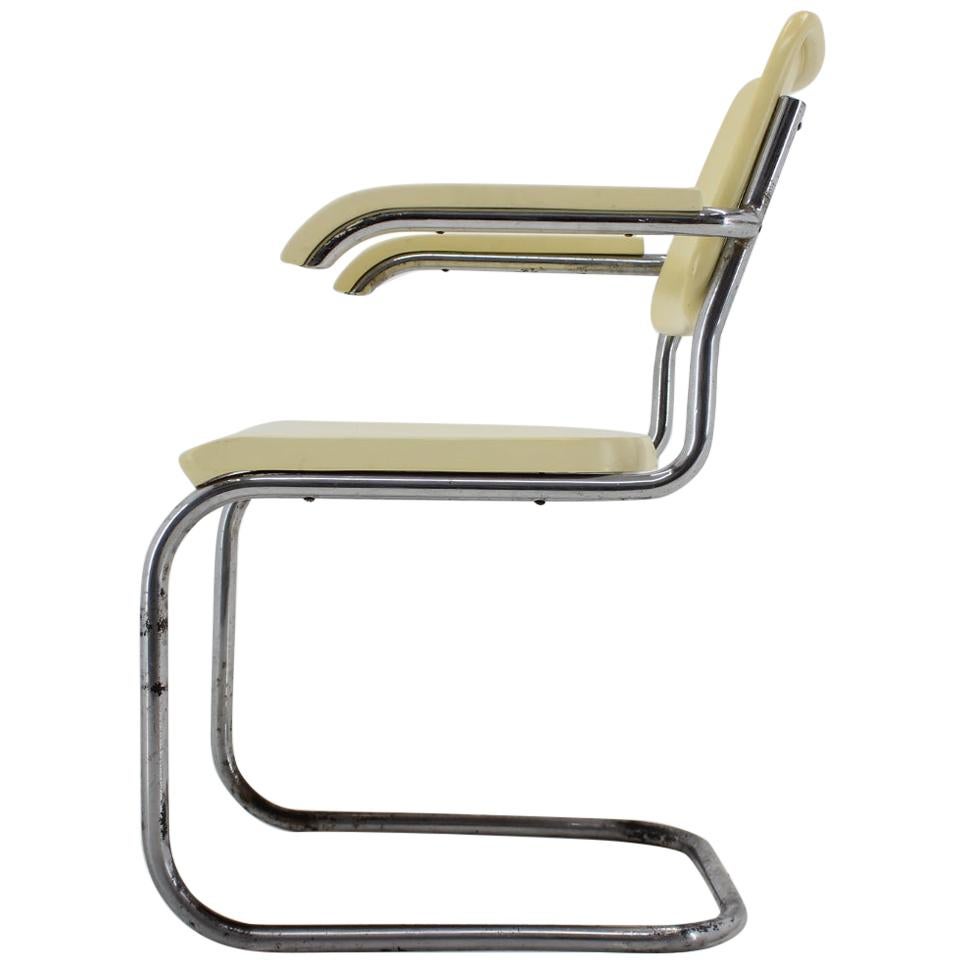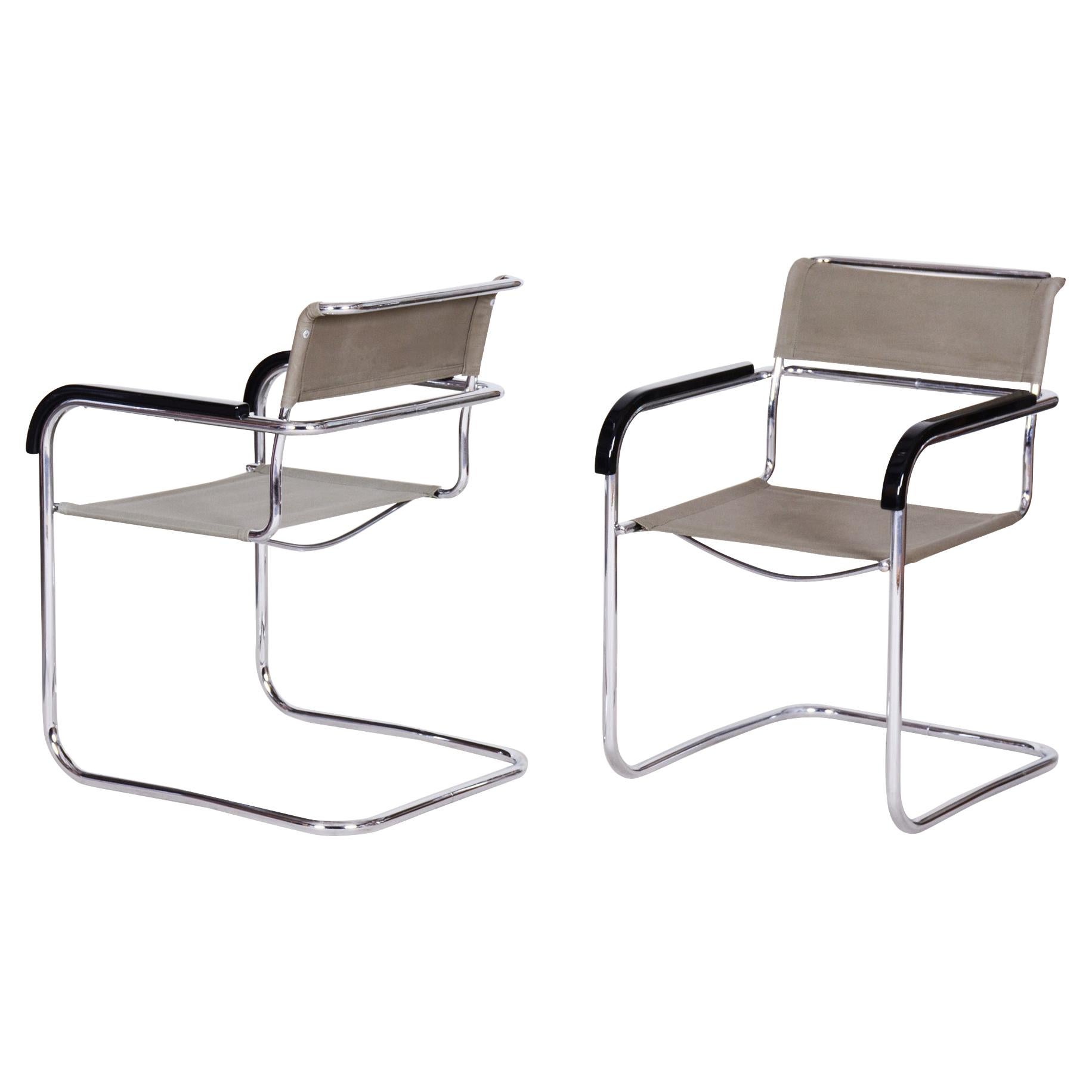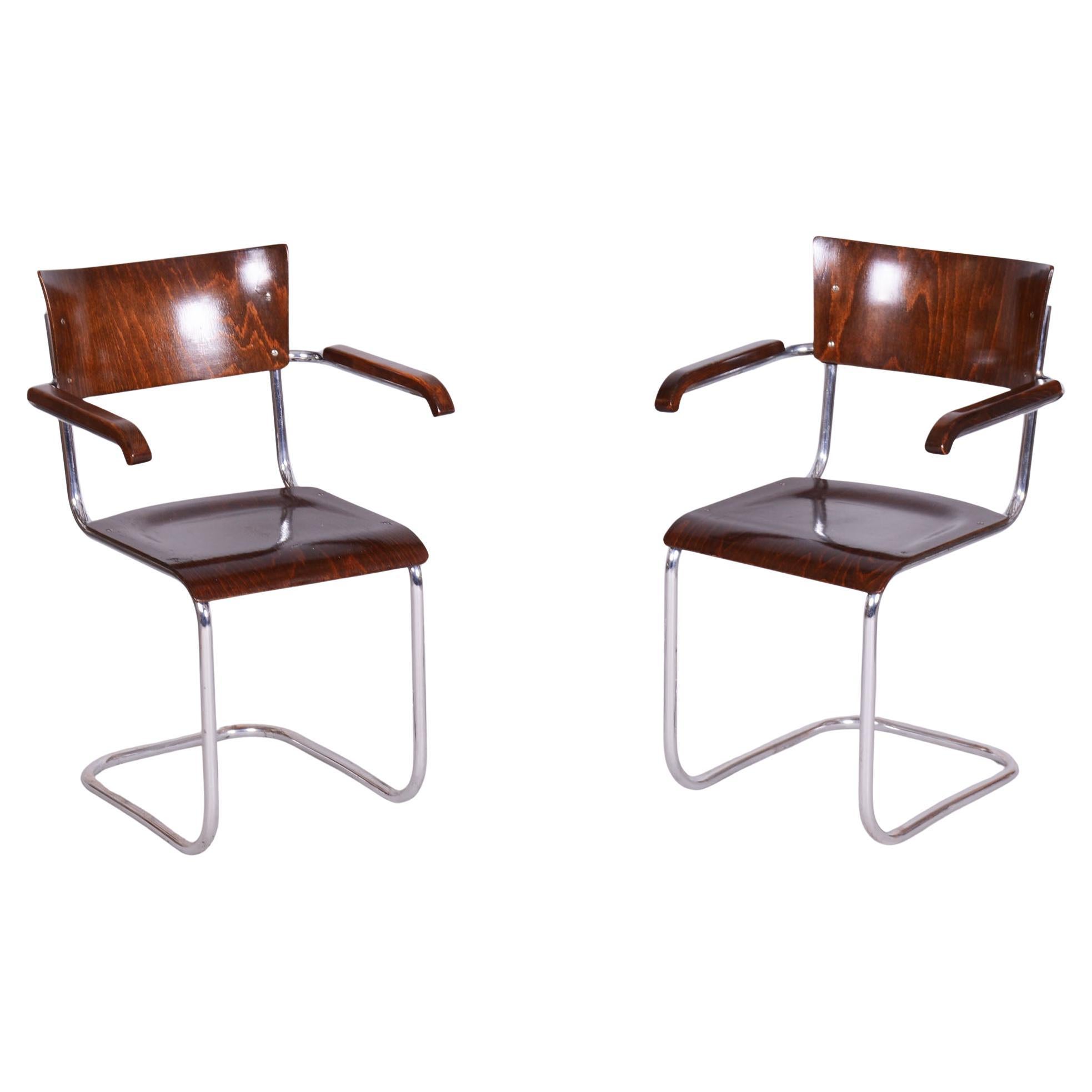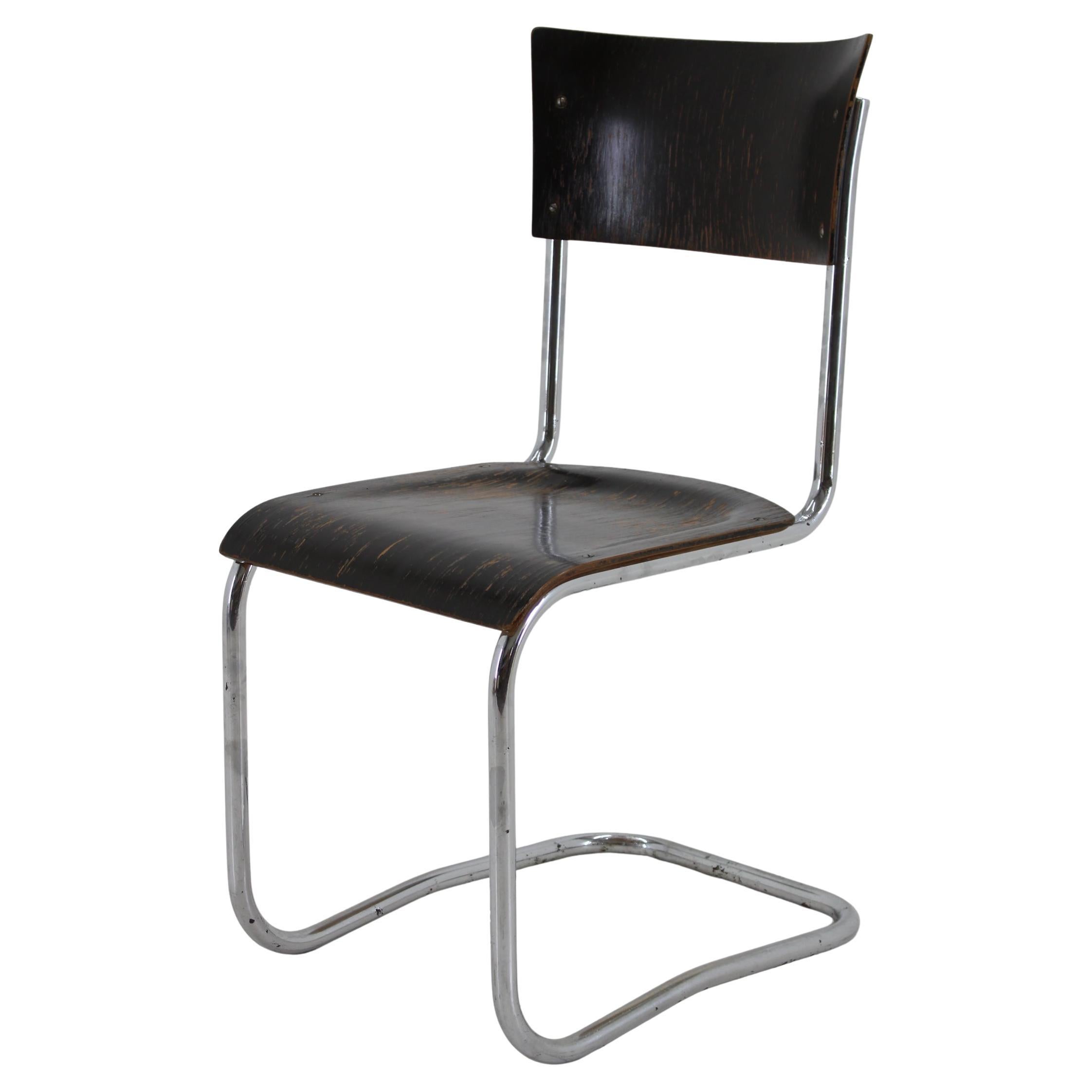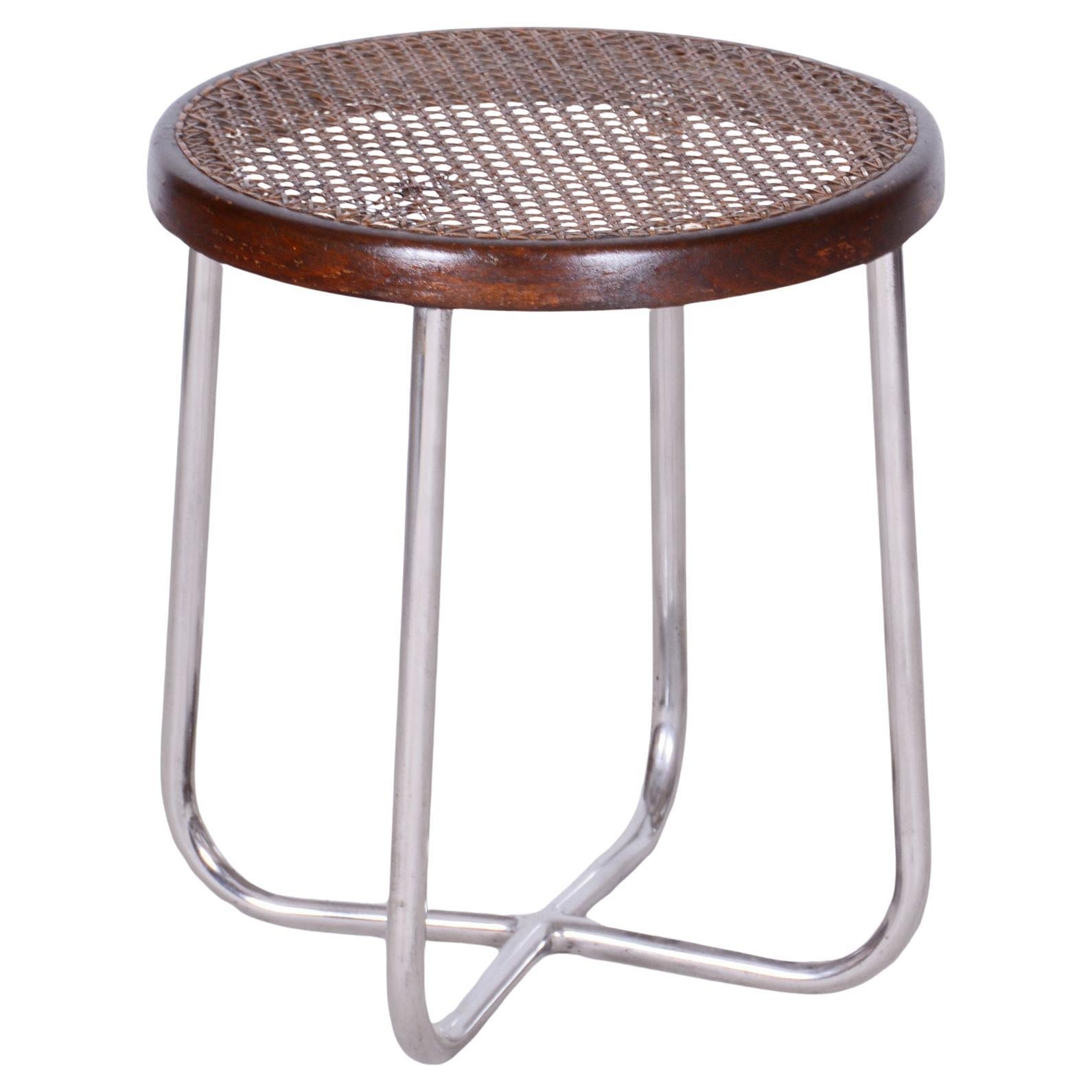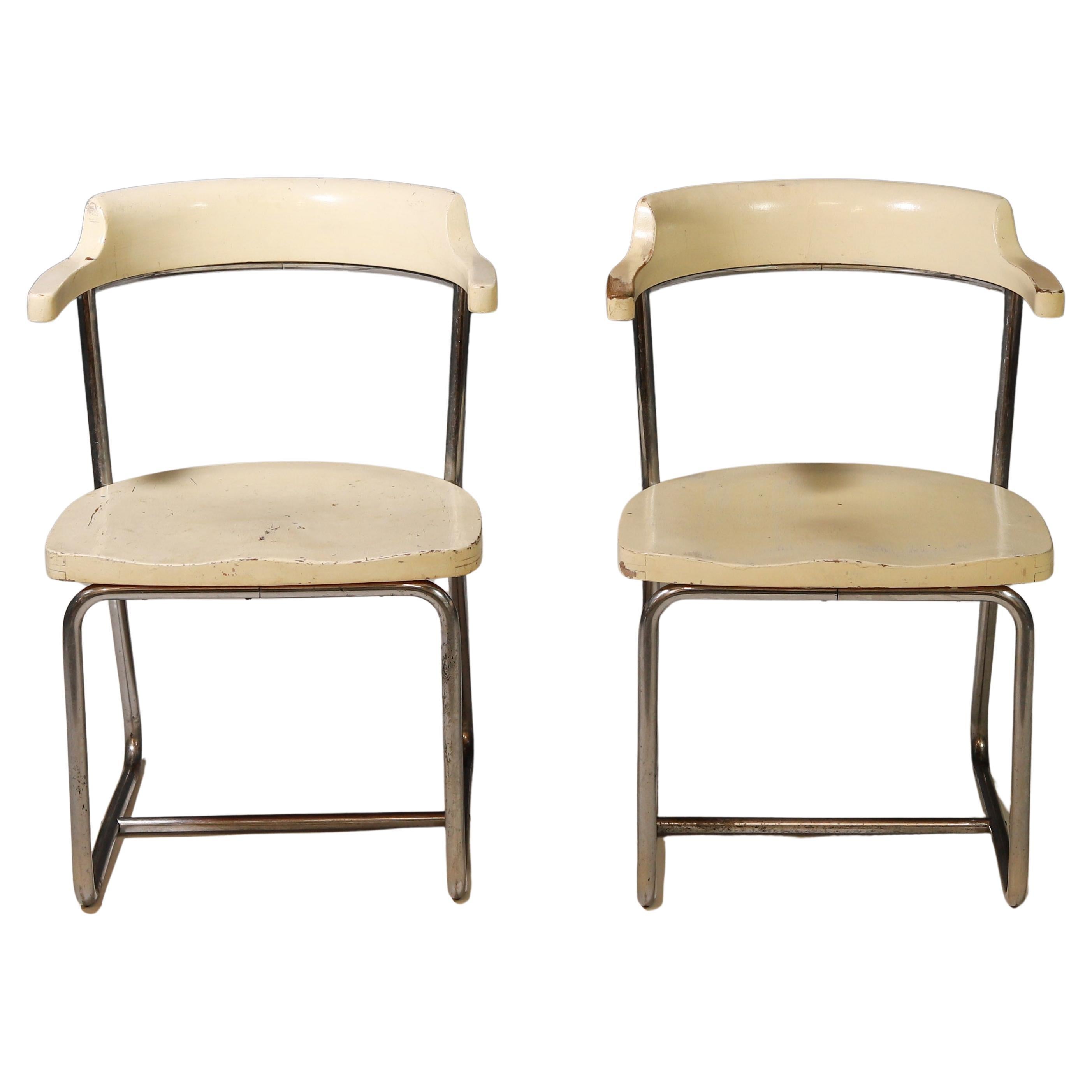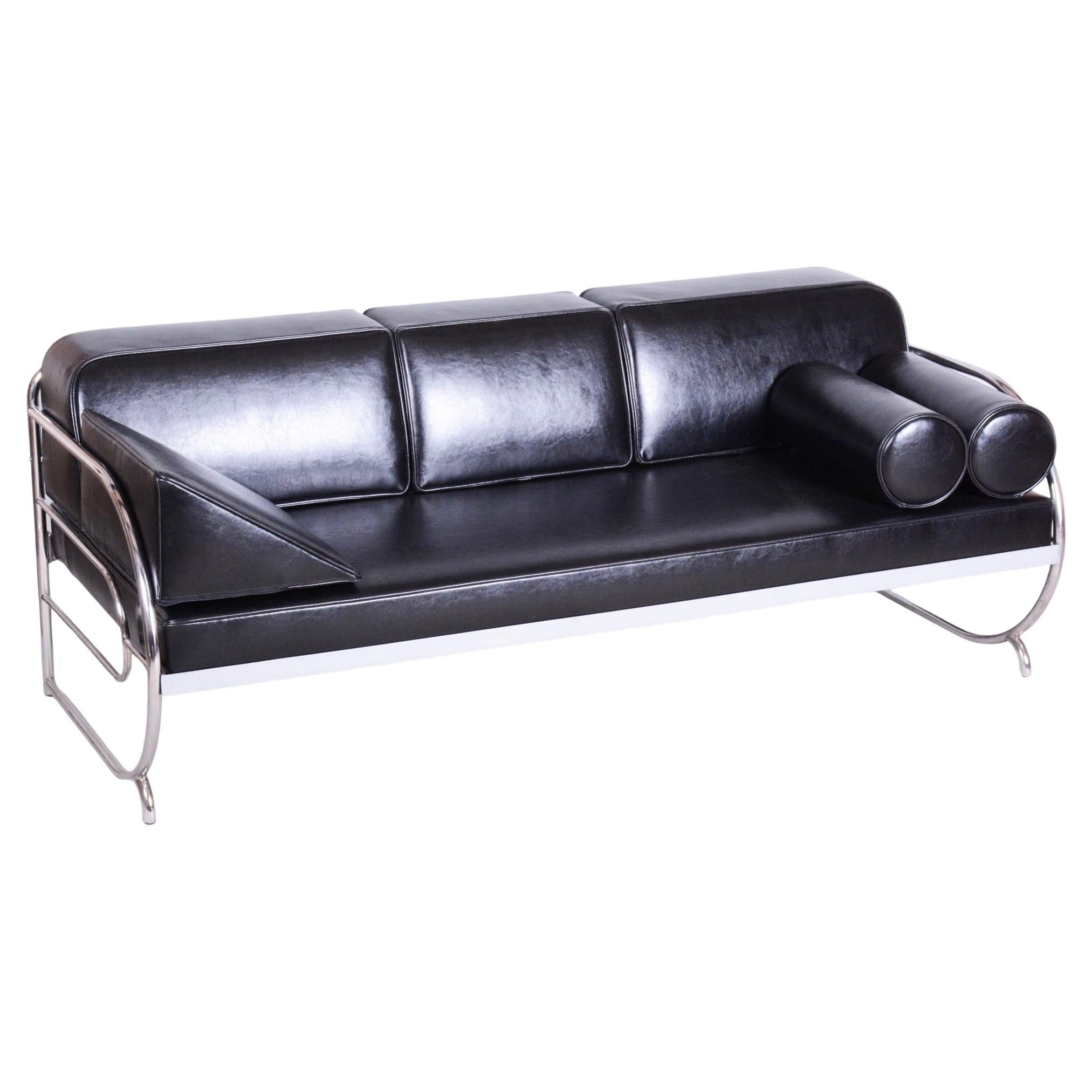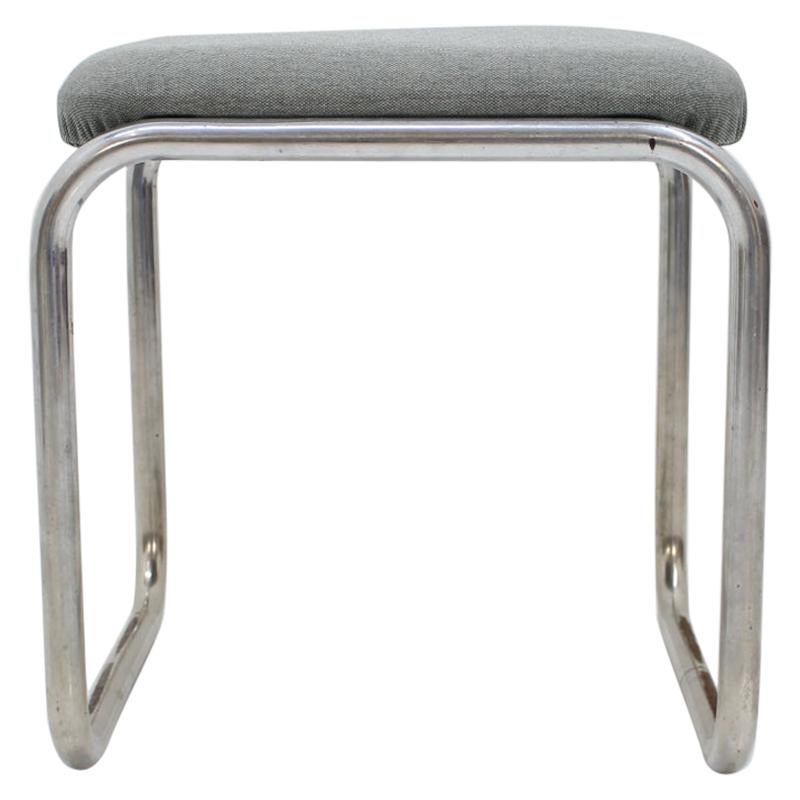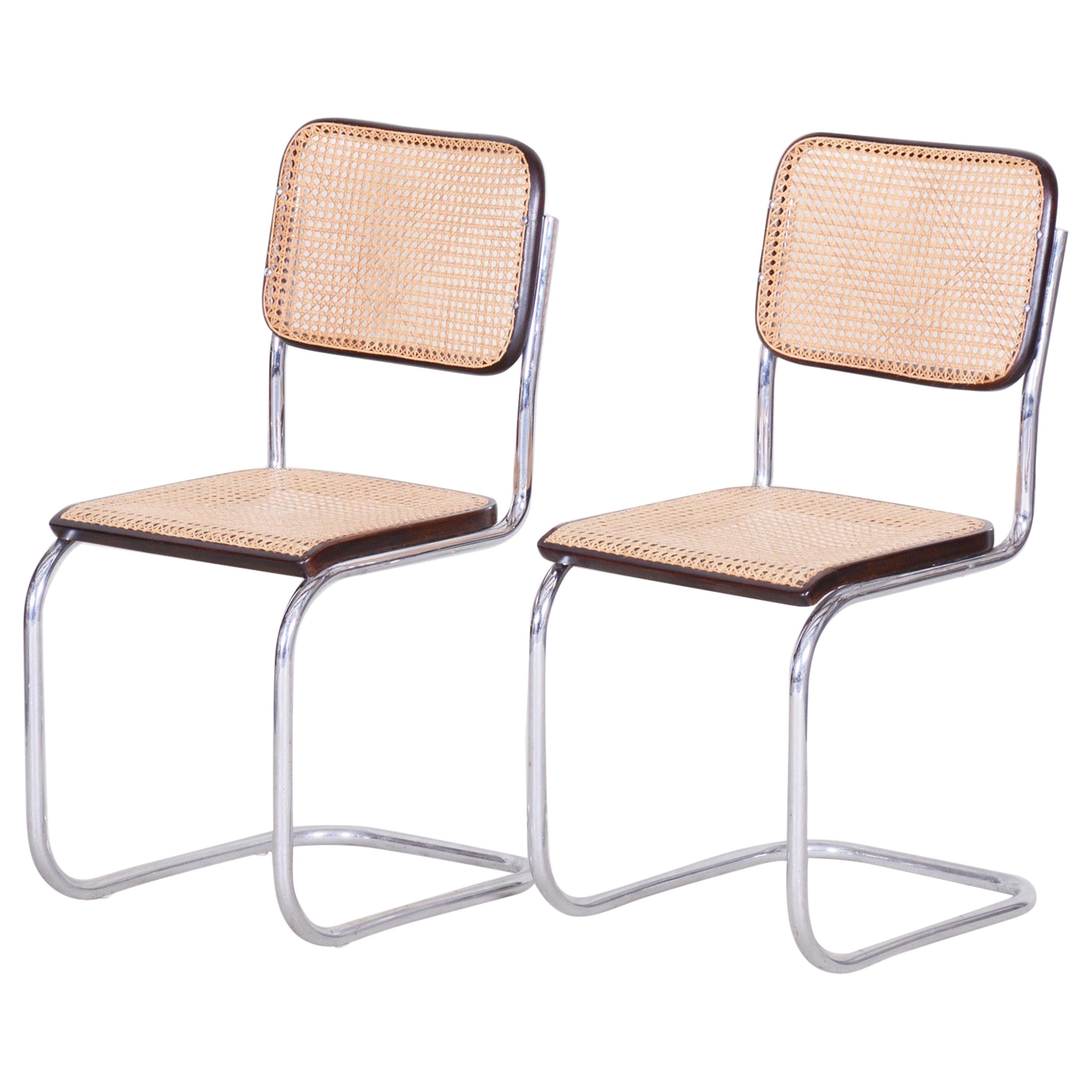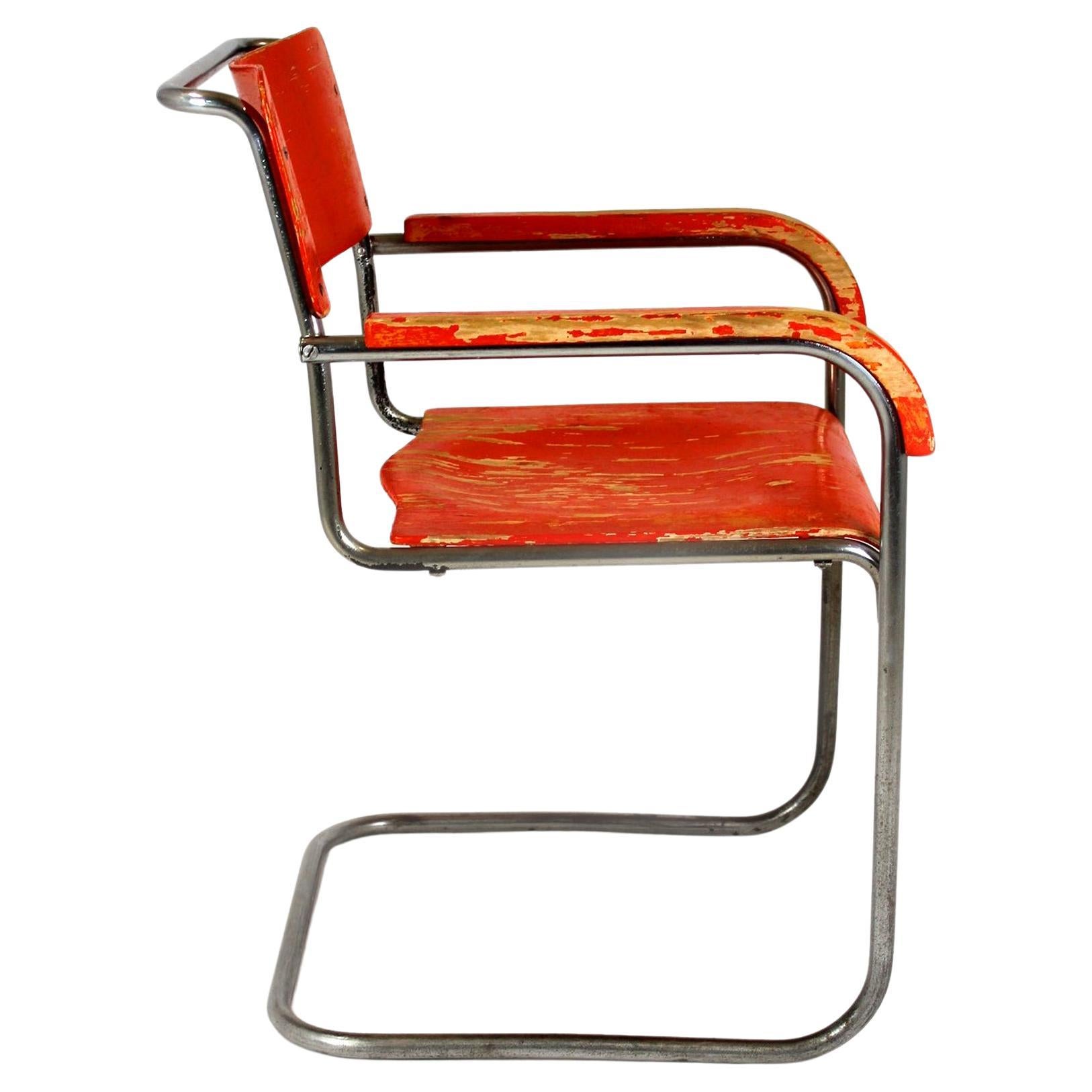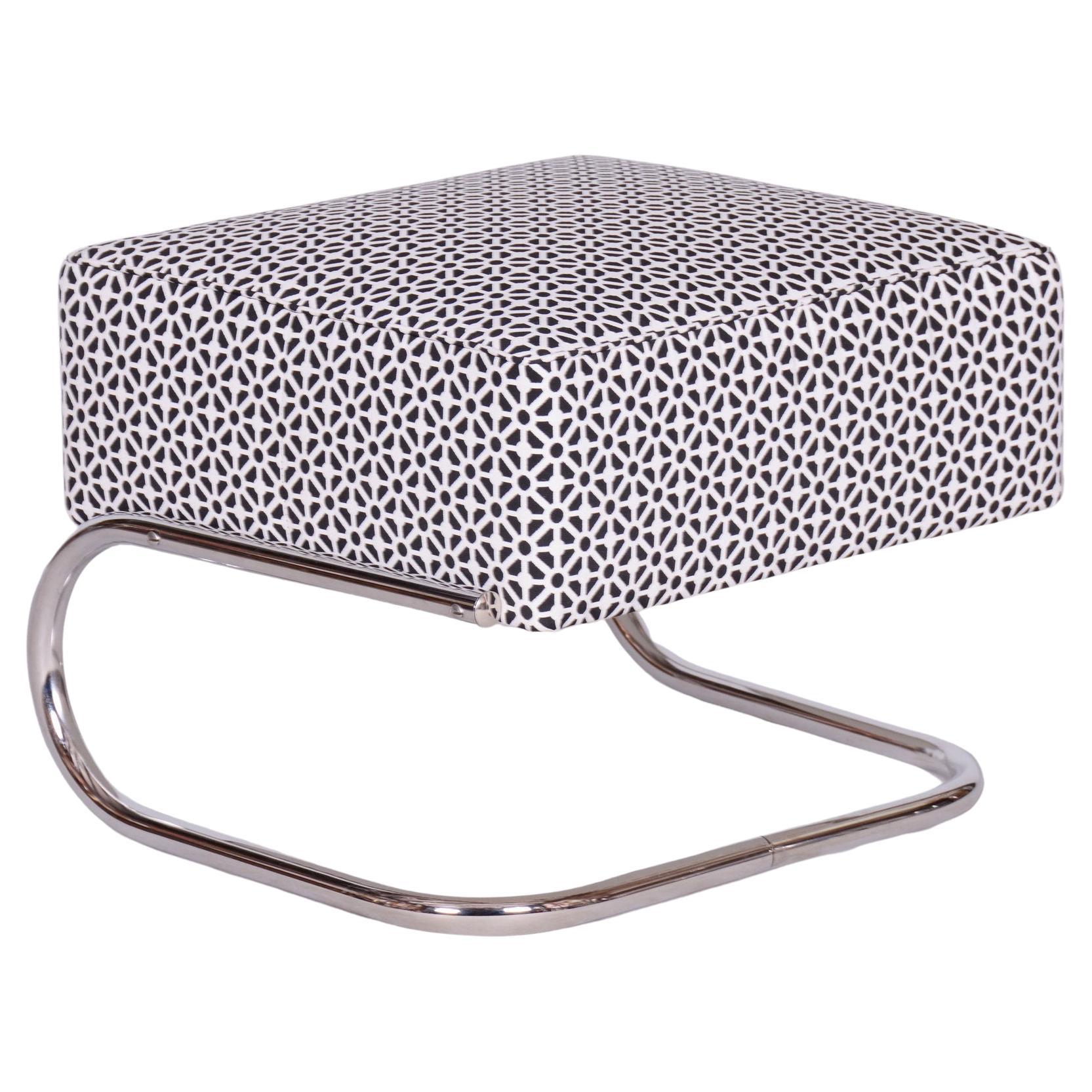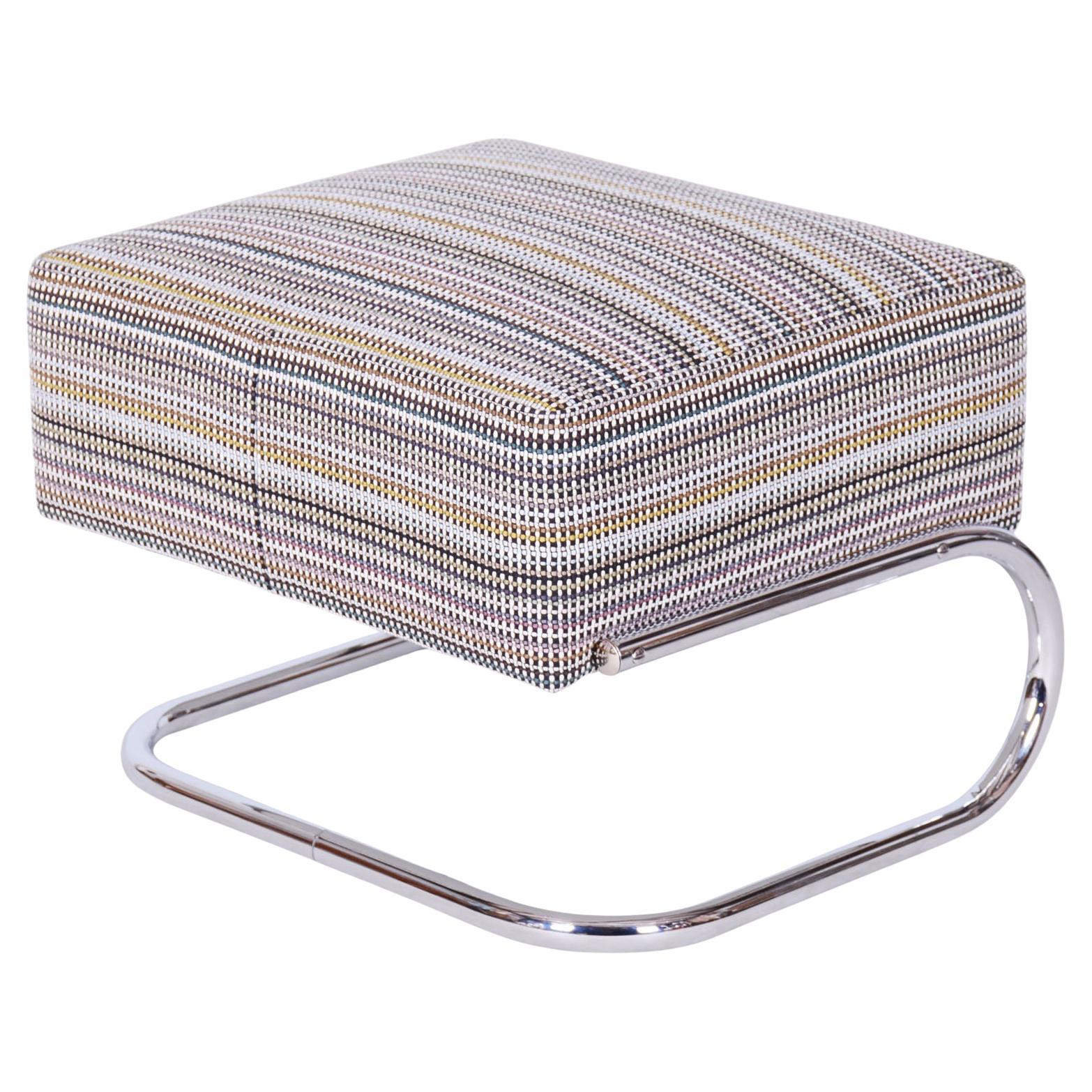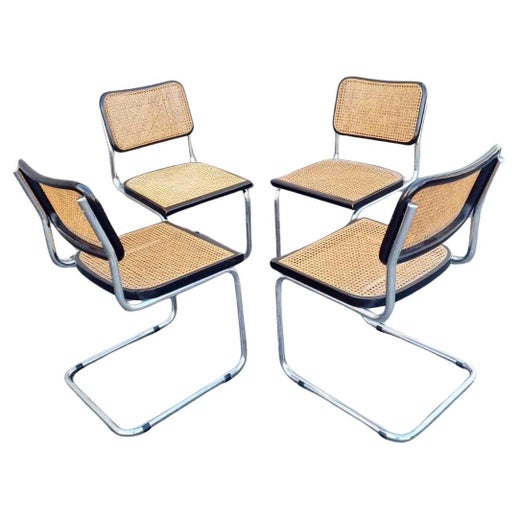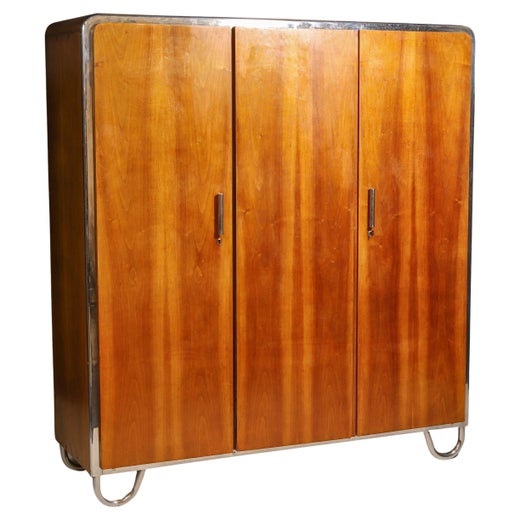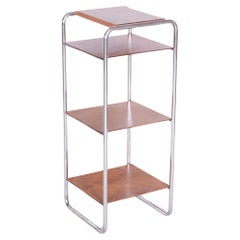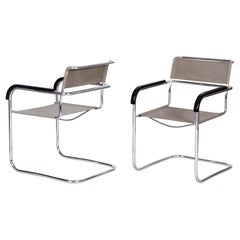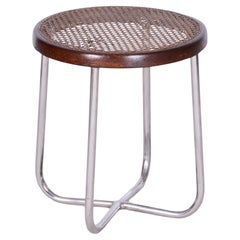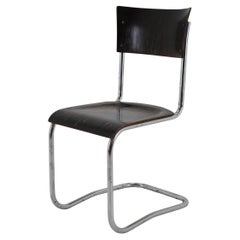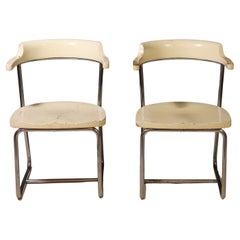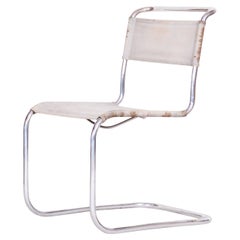
Czech Bauhaus Chair, Marcel Breuer and Robert Slezák, Chrome, 1930s
View Similar Items
Czech Bauhaus Chair, Marcel Breuer and Robert Slezák, Chrome, 1930s
About the Item
- Creator:Robert Slezák (Maker),Marcel Breuer (Designer)
- Dimensions:Height: 32.29 in (82 cm)Width: 19.69 in (50 cm)Depth: 23.63 in (60 cm)Seat Height: 16.93 in (43 cm)
- Style:Bauhaus (In the Style Of)
- Materials and Techniques:
- Place of Origin:
- Period:
- Date of Manufacture:1930-1939
- Condition:
- Seller Location:Brandys nad Labem, CZ
- Reference Number:1stDibs: LU2641325380142
Marcel Breuer
The architect and designer Marcel Breuer was one the 20th century’s most influential and innovative adherents of modernism. A member of the Bauhaus faculty, Breuer — like such colleagues as the architects Walter Gropius and Ludwig Mies van der Rohe, and the artists and art theoreticians László Moholy-Nagy and Josef Albers — left Europe in the 1930s to champion the new design philosophy and its practice in the United States.
Born in Hungary, Breuer became a Bauhaus student in 1920 and quickly impressed Gropius, the German school’s founder, with his aptitude for furniture design. His early work was influenced by the minimalist Dutch design movement De Stijl — in particular the work of architect Gerrit Rietveld.
In 1925, while he was head of the Bauhaus furniture workshop, Breuer realized his signature innovation: the use of lightweight tubular-steel frames for chairs, tables and sofas — a technique soon adopted by Mies and others. Breuer’s attention gradually shifted from design to architecture, and, at the urging of Gropius, he joined his mentor in 1937 on the faculty of Harvard and in an architectural practice.
In the 1940s, Breuer opened his own architectural office, and there his style evolved from geometric, glass-walled structures toward a kind of hybrid architecture — seen in numerous Breuer houses in New England — that pairs bases of local fieldstone with sleek, wood-framed modernist upper floors. In his later, larger commissions, Breuer worked chiefly with reinforced concrete and stone, as seen in his best-known design, the brutalist inverted ziggurat built in New York in 1966 as the home of the Whitney Museum of American Art.
Breuer’s most famous furniture pieces are those made of tubular steel, which include the Wassily chair — named after Wassily Kandinsky and recognizable for its leather-strap seating supports — and the caned Cesca chair.
Breuer also made several notable designs in molded plywood, including a chaise and nesting table for the British firm Isokon and a student furniture suite commissioned in 1938 for a dormitory at Bryn Mawr College. Whether in metal or wood, Breuer’s design objects are elegant and adaptable examples of classic modernist design — useful and appropriate in any environment.
Find vintage Marcel Breuer seating, storage cabinets and lighting on 1stDibs.
Robert Slezák
Best known for his sleek, Bauhaus style, designer Robert Slezák was a pioneer in the manufacturing of chrome and bent-metal furniture during the early 20th century.
Born in the town of Bystřice pod Hostýnem in today’s Czech Republic, Slezák originally trained as a locksmith and in 1908 established a locksmith’s workshop in his hometown. What began as a small business providing common locksmith products grew into the Slezák Factory, which made brass fittings for furniture and buildings. In 1911, Slezák became one of the first manufacturers in Europe to use a galvanic coating of copper, chromium and nickel on the surface of his products.
Starting in 1913, Slezák focused on designing and producing brass and metal furniture with wood accents, like chairs, beds and tables. By the 1930s, Slezák’s furniture style began to evolve towards mid-century modern and Bauhaus design, leading to streamlined and tubular three-seat sofas, stools, bent-metal chairs, wood and chrome coffee tables, desks, lighting and cabinets. During this time, Slezák also collaborated with the Czech furniture company Ton N.P. Bystřice pod Hostýnem on pieces including his Bauhaus chrome and walnut side table.
After 1948, Slezák’s firm became part of the Kovona furniture-making company, which continued to produce and recreate Slezák’s designs from the 1950s to the 1980s. Since 1992, the Czech furniture manufacturer has been known as Kovonax.
Today, Slezák’s designs remain highly sought after by interior designers and collectors of mid-century and Bauhaus furniture.
On 1stDibs, find a range of vintage Robert Slezák seating, tables, lighting and more.
More From This Seller
View AllVintage 1930s Czech Bauhaus More Mirrors
Steel, Chrome
Early 20th Century Czech Bauhaus Chairs
Chrome
Early 20th Century Czech Bauhaus Chairs
Steel, Chrome
Early 20th Century Czech Bauhaus Stools
Steel, Chrome
Vintage 1930s Czech Bauhaus Coat Racks and Stands
Chrome, Steel
Early 20th Century Czech Bauhaus Sofas
Steel, Chrome
You May Also Like
Vintage 1920s Czech Bauhaus Chairs
Chrome
Mid-20th Century Czech Bauhaus Chairs
Chrome
Mid-20th Century Czech Bauhaus Chairs
Chrome
Vintage 1930s Czech Bauhaus Stools
Chrome
Early 20th Century Bauhaus Chairs
Steel
Vintage 1930s Czech Bauhaus Chairs
Chrome
